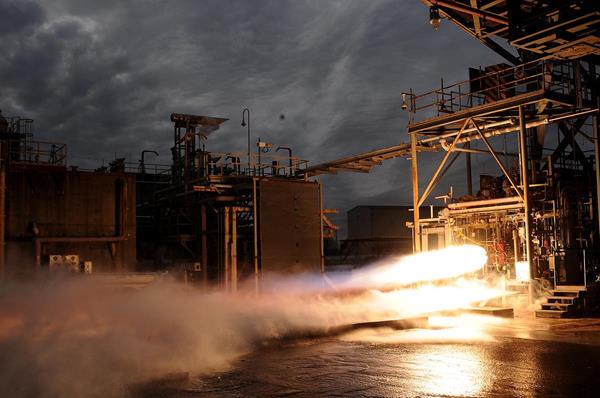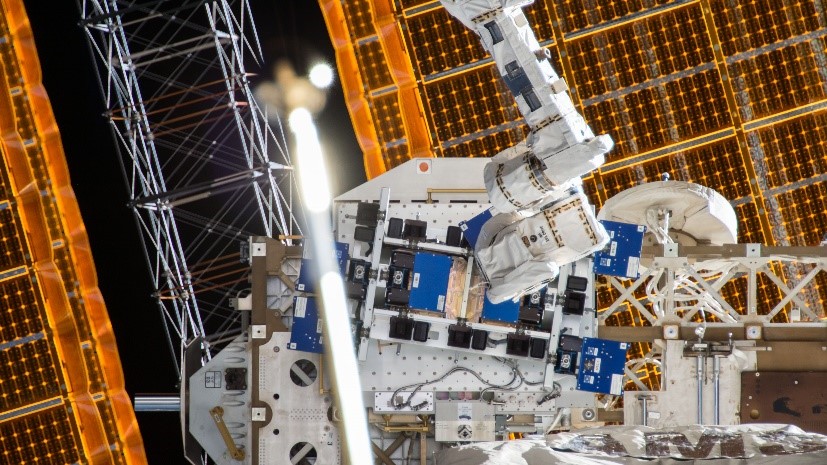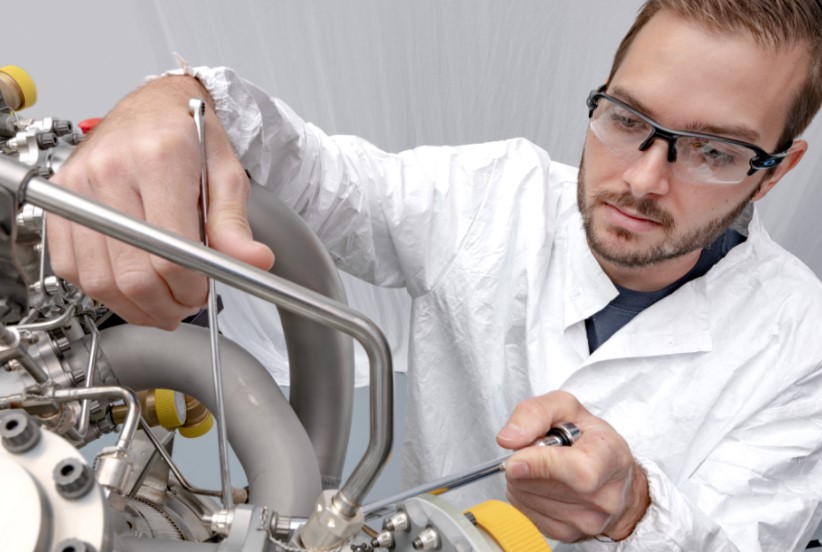US aerospace and defense contractor L3Harris Technologies has announced plans to acquire rocket propulsion system manufacturer Aerojet Rocketdyne.
Once finalized, the deal will see the combination of two high-profile aerospace 3D printing innovators, with a history of using the technology to create radio frequency (RF) and rocket engine parts, respectively. According to Aerojet Rocketdyne CEO Eileen P. Drake, the $4.7 billion all-cash transaction is now set to facilitate “accelerated innovation,” when it comes to “national security propulsion solutions.”
“Joining L3Harris is a testament to the world-class organization and team we’ve built and represents a natural next phase of our evolution,” added Drake. “As part of L3Harris, we will bring our advanced technologies together with their substantial expertise and resources to accelerate our shared purpose: enabling the defense of our nation and space exploration.”
“This is an exciting new chapter for Aerojet Rocketdyne and we look forward to working closely with L3Harris to complete this transaction.”

Aerospace innovators join forces
Aerojet Rocketdyne and L3Harris operate in different fields, with one developing sensor and IT systems and the other focused on engine manufacture, but they’ve both previously turned to 3D printing to address the aerospace and defense markets.
The former has long utilized the technology to produce some of the components in its rocket engines and strategic missile systems. As long ago as 2017, Aerojet Rocketdyne hot-fire tested a 3D printed thrust chamber for its RL10 rocket engine. Before, the assembly was composed of a series of complex steel tubes, but by switching to SLM 3D printing, the firm was able to reduce its part count by 90%.
More recently, in May 2021, the firm hot-fire tested the RL10C-X, an upgraded version of the RL10. Featuring a 3D printed injector and combustion chamber, the system demonstrated ignition and long-term durability within space simulations. Last year, Aerojet Rocketdyne also received a large United Launch Alliance engine order, which will see it deliver 116 RL10C-Xs for use in the ULA’s Vulcan Centaur rockets.
For its part, L3Harris has previously worked with Nano Dimension to develop 3D printed RF circuitry for the International Space Station. Produced using a DragonFly 3D printer, these parts were designed to transmit data to and from the ISS. Overall, the initiative was set up to allow the firms to assess the performance of 3D printed High-Performance Electronic Devices (Hi-PEDs) in demanding space conditions.

Unpacking L3Harris’ $4.7BN takeover
L3Harris’ deal to acquire Aerojet Rocketdyne has seen it sign a definitive agreement to buy 100% of the firm at $58 per share, in a $4.7 billion transaction, inclusive of debt. The deal, which values Aerojet Rocketdyne at just over twice its $2.3 billion annual turnover, marks the second such acquisition announced by L3Harris in 2022, after it bought Viasat’s Tactical Data Link line for $1.96 billion in October.
The company says its expansion “demonstrates its focus on delivering critical capabilities to warfighters while strengthening the nation’s defense industrial base through increased competition.” More specifically, the firm expects the deal to provide its clientele with a “strengthened merchant supplier” to “address both current and emerging threats and promote scientific discovery and innovation.”
It’s thought that once the transaction closes later this year, it could also open the door to technological advances in several fields that are critical to US national defense interests, including missile technologies, hypersonics and more.
“We’ve heard the US Department of Defense (DoD) leadership loud and clear: they want high-quality, innovative and cost-effective solutions to meet both current and emerging threats, and they’re relying upon a strong, competitive industrial base to deliver those solutions,” added Christopher E. Kubasik, CEO of L3Harris. “With this acquisition, we will use the combined talents of more than 50,000 employees to drive continuous process improvement, enhance business operations and elevate the performance of this crucial national asset.”

Aerojet Rocketdyne is now one of several firms in the aerospace industry that’s utilizing 3D printing in the build of their latest propulsion systems. Late last year, it was announced that GKN Aerospace is 3D printing turbines and nozzles for the Ariane 6 launchers being built by the ArianeGroup on behalf of the European Space Agency (ESA).
It was also revealed that GE Additive is being consulted on the upcoming Boom Supersonic Symphony engine. Set to power the firm’s 1,300 mph Overture airliner, the partially-3D printed propulsion system is expected to feature enhanced axisymmetric supersonic intakes, variable geometry low-noise exhaust nozzles, and passively-cooled turbines.
To stay up to date with the latest 3D printing news, don’t forget to subscribe to the 3D Printing Industry newsletter or follow us on Twitter or liking our page on Facebook.
While you’re here, why not subscribe to our Youtube channel? featuring discussion, debriefs, video shorts and webinar replays.
Are you looking for a job in the additive manufacturing industry? Visit 3D Printing Jobs for a selection of roles in the industry.
Featured image shows a firing test of Aerojet Rocketdyne’s 3D printed Bantam rocket engine at the NASA Marshall Space Flight Center. Photo via Aerojet Rocketdyne.



